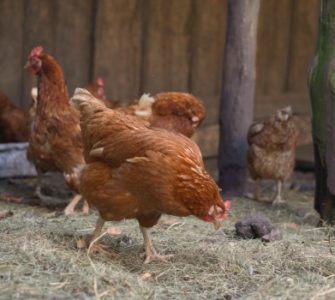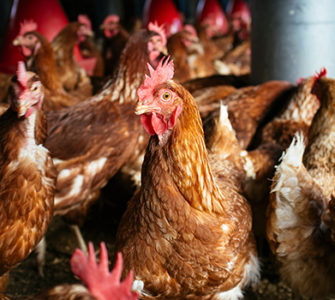Veterinarian: Rethink layer health programs with move to cage-free
The poultry industry’s gradual switch to cage-free egg production has underscored the need to rethink disease-control programs and address health and welfare challenges unique to layers in these production systems, according to Jean Sander, DVM.
With more than 200 US retailers pledging to sell only eggs produced in cage-free systems by 2025, producers are eager to make the switch to fill this growing demand. However, the cage-free production gives rise to health problems not commonly seen in conventionally raised layers, she told Poultry Health Today.
And while many producers have learned about them through trial and error, it’s best to be proactive to ensure the health, welfare and performance of the birds.
“Any time you put a bird in close contact with their waste material, the feces, anything that passes through the gut now has a higher likelihood of causing disease problems in the bird,” she said.
“And when they’re on the floor in an aviary system, they are in direct contact with their feces. So, you have a lot of disease problems you didn’t see in cage systems.”
Take coccidiosis, for example, a common parasitic disease that spreads in the birds’ environment when they defecate and re-ingest coccidia oocysts.
It is less of a threat when layers are reared in cages, but once birds are sharing floor space with other hens, coccidiosis pressure is markedly increased.
If left unchecked, coccidiosis can be “very deadly” to layers, Sander added. It also invites more problems with necrotic enteritis.
Traditionally, layers are vaccinated for coccidiosis. In many cases, however, producers have found it necessary to use what broiler producers call a bioshuttle program — starting birds on a vaccine and then supplementing protection with an anticoccidial.
Intestinal parasites such as roundworms and tapeworms also tend to be more common in cage-free systems. In addition, behavioral problems inherent with cage-free — feather pecking, cannibalism and hysteria — can compromise flock health and welfare. “Looking at the genetics of the bird is very helpful in finding birds that are more conducive to open populations than others,” Sander added.
This has led to producers having to work more closely with veterinarians to help them understand the physiology of birds, run flock diagnostics and establish programs to minimize disease problems.
“Understanding the nature of the bird [is very important],” she added. “Hens, if given an option, are going to lay in an area that is nest-like.
“When there is a lot of litter and fecal material on the ground that’s dry and nice and soft, and they can get in there and make a nest, you end up with a lot of floor eggs.”
To address the problem, producers need to train young layers to lay eggs in the right place, something which requires more attention to detail, Sander said.
“So, it requires a lot more labor and a lot more attention to detail in making sure you’re out there often and getting all those eggs up that are on the floor. Because if you don’t do that, you’re going to end up having a chronic problem over the life of that flock,” she added.
Posted on September 2, 2020

















